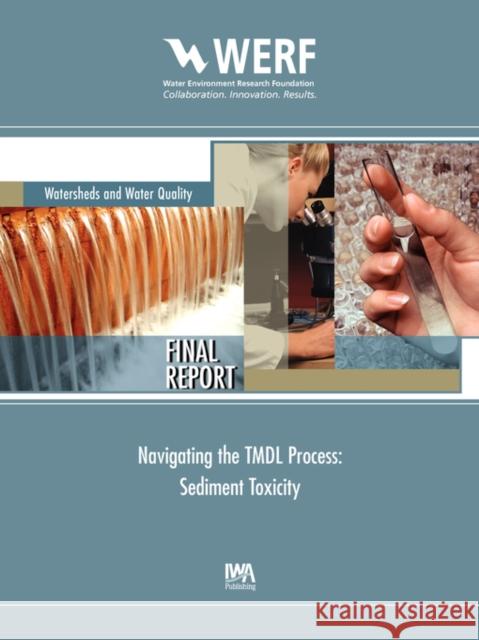Navigating the TMDL Process: Sediment Toxicity » książka
Navigating the TMDL Process: Sediment Toxicity
ISBN-13: 9781843397663 / Angielski / Miękka / 2007 / 194 str.
A key step in the development of Total Maximum Daily Load (TMDL) allocations for water bodies impaired due to sediment toxicity is the identification of chemicals responsible for toxicity. Sediment toxicity identification evaluation procedures (TIEs) are one of the primary tools used in this process.
This project evaluated standardized and recently developed sediment TIE methods developed by the US EPA and others, to determine their utility for identifying chemicals responsible for toxicity. In this study, formulated sediments were spiked with five chemicals: copper, fluoranthene, tetrachlorobenzene, nonylphenol and ammonia. Experiments were conducted using sediments spiked with single chemicals and chemical mixtures. Toxicity tests used the estuarine amphipod Eohaustorius estuarius and the freshwater amphipod Hyalella azteca. TIEs were conducted using solid-phase (whole sediment) and sediment interstitial waters.
Results indicate that the TIE methods are sufficient to characterize and identify toxicity due to single and multiple chemicals using spiked sediments. One key finding from the spiked sediment experiments is that methods to elute chemicals from extraction media used in solid-phase and interstitial water TIEs require further refinement to ensure complete and consistent elution of sorbed chemicals. An additional finding is that both solid-phase and interstitial water TIE procedures provide useful lines of evidence and that both approaches should be used in a weight-of-evidence approach in the sediment TIE process.
In the final phase of this project, we evaluated the TIE procedures using ambient samples collected from three marine sites and three freshwater sites. Marine sediments were collected from Switzer Creek in San Diego Bay, Upper Newport Bay in Newport Beach, and Consolidated Slip, in Long Beach Harbor, all of which are sites in southern California. Freshwater sediments were collected from two additional sites in California: San Diego Creek, in Newport Beach, and Alisal Slough, in Salinas. The final freshwater sediment was collected from a site in Indiana Harbor. Multiple solid-phase and interstitial water TIEs were conducted on each sediment and results of these were combined with chemical analyses and other lines-of-evidence to evaluate the methods. The results indicate that sediment TIE methods are sufficiently developed to characterize toxicity due to general classes of chemicals such as cationic metals, organic chemicals, and ammonia.
Methods to improve extraction and elution of metal and organic chemicals in highly toxic sediments require further refinement in order to allow identification of specific chemicals responsible for toxicity as part of the Phase II TIE process. These refinements include determining the appropriate masses of solid-phase extraction media to allow complete removal of toxic chemicals from sediments and interstitial waters. In addition, we recommend that additional studies be designed to determine optimal equilibration periods to maximize removal of toxic chemicals using resin amendments in solid-phase sediment TIEs. As in the spiked-sediment TIEs, we observed inconsistent elution of toxic chemicals from extraction media used in solid-phase and interstitial water Phase II TIEs with the ambient samples. These procedures require additional work to ensure that chemicals responsible for toxicity are completely eluted from extraction media. Improvement of the Phase II TIE elution and solvent handling steps should facilitate better identification of chemicals responsible for toxicity, particularly in situations where toxicity is due to highly insoluble chemicals. When these considerations are satisfactorily addressed, the methods evaluated are capable of providing useful lines of evidence that can be combined to successfully identify sediment toxicants.











